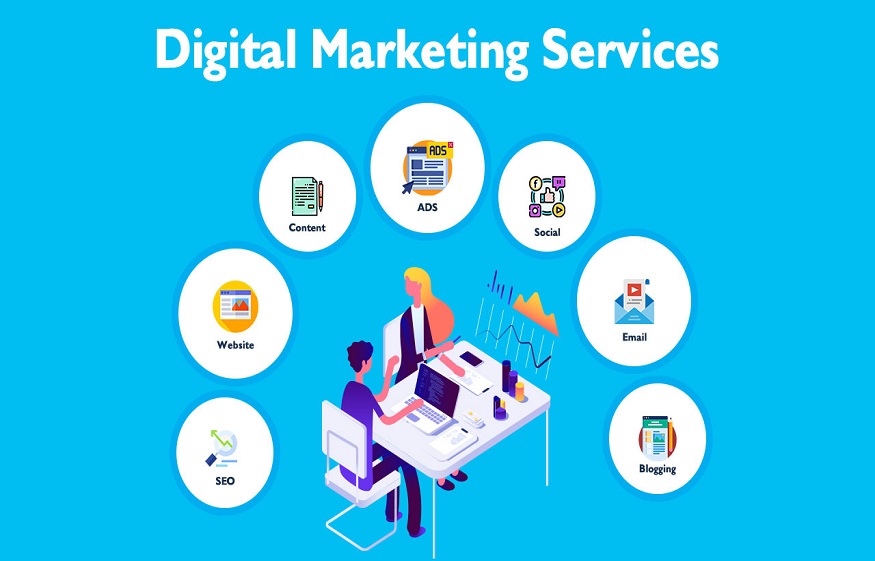In today’s digital age, consumers are bombarded with financial service options. From traditional banks to innovative fintech startups, the competition for attention is fierce. This is where paid advertising comes in – a powerful tool to cut through the noise and reach your target audience directly. But navigating the world of paid advertising for financial services can be complex. This comprehensive guide will equip you with the knowledge and strategies to craft winning campaigns that generate leads and drive business growth.
Understanding the Landscape
Financial services encompass a broad spectrum of products and services, from investment banking to personal loans. Before diving into paid advertising, it’s crucial to understand the specific regulatory landscape for your niche. Advertising standards bodies and financial regulators often have stricter guidelines for financial advertising compared to other industries. Familiarize yourself with these regulations to ensure your campaigns are compliant and avoid potential roadblocks.
Defining Your Goals
Successful paid advertising starts with clear goals. Are you looking to generate brand awareness, acquire new customers, or promote specific products? Having well-defined goals allows you to tailor your campaigns and measure success effectively. Here are some common goals for digital marketing services for financial firms advertising:
- Brand awareness: Increase visibility for your financial institution and establish yourself as a trusted brand.
- Lead generation: Capture user information for further nurturing and conversion.
- Product promotion: Drive interest and applications for specific financial products (loans, mortgages, investments).
- Website traffic: Increase website visits to educate potential customers and drive conversions.
Targeting Your Ideal Customer
Financial services cater to diverse audiences with varying needs and financial goals. Effective paid advertising hinges on targeting the right people. Here are some key factors to consider:
- Demographics: Age, income level, employment status, location.
- Financial needs: Are they looking to save, invest, borrow, or manage debt?
- Financial literacy: Beginner, intermediate, or sophisticated investor?
- Life stage: Young professional, family planning for college, approaching retirement.
- Online behavior: Websites they visit, apps they use, interests they follow.
By leveraging audience segmentation tools offered by advertising platforms, you can create targeted campaigns that resonate with specific customer segments and deliver a more personalized experience.
Choosing the Right Platform
A multitude of paid advertising platforms exist, each with its strengths and target audience. Here’s a breakdown of some popular options for financial services:
- Search Engine Marketing (SEM): Reach potential customers actively searching for financial products and services using platforms like Google Ads and Microsoft Advertising. Utilize relevant keywords related to your offerings and tailor your ad copy to address specific search queries.
- Social Media Advertising: Platforms like Facebook, LinkedIn, and Twitter offer powerful targeting options and allow you to build brand awareness while reaching users based on demographics and interests.
- Display Advertising: Place visually engaging banner ads on high-traffic websites relevant to your target audience. Utilize retargeting strategies to reach users who have previously interacted with your brand.
- Video Advertising: Platforms like YouTube offer immense reach and engagement potential. Create informative and compelling video ads to educate and convert potential customers.
Crafting Compelling Ad Copy
Your ad copy is your first impression, so it needs to be clear, concise, and persuasive. Here are some key principles for crafting effective ad copy for financial services:
- Highlight the benefits: Focus on how your services will improve the user’s financial situation.
- Use strong calls to action: Tell users what you want them to do next, whether it’s visiting your website or applying for a specific product.
- Maintain a professional tone: Evoke trust and credibility with clear and jargon-free language.
- Comply with regulations: Ensure your ad copy adheres to all relevant financial advertising regulations.
Optimizing for Performance
Paid advertising is a dynamic process that requires continuous monitoring and optimization. Most platforms offer analytics dashboards that allow you to track key metrics such as impressions, clicks, conversions, and cost-per-acquisition (CPA). Based on this data, you can:
- Refine your targeting: Identify the audience segments that are converting best and adjust your targeting accordingly.
- Optimize your ad copy: See what messaging resonates with your audience and adjust your copy for better performance.
- Test different ad formats: Experiment with various ad formats (images, videos, text ads) to see what drives the best results.
- Manage your budget: Allocate resources efficiently and adjust your budget based on campaign performance.
Compliance Considerations
- Fair and non-discriminatory practices: Avoid targeting based on race, religion, or other protected characteristics as outlined by regulatory bodies.
- Disclosure of fees and terms: Be transparent about interest rates, fees, and other critical terms associated with your financial products.
- Data privacy: Comply with data privacy regulations such as GDPR and CCPA when collecting and using user data for advertising purposes.
Building Trust and Credibility
Financial services deal with sensitive personal information. Building trust and credibility is paramount for success. Here’s how you can achieve this in your paid advertising efforts:
- Partner with reputable publishers: Place your ads on high-quality, trusted websites to establish brand association.
- Showcase client testimonials: Feature positive reviews and success stories from satisfied customers.
- Leverage industry awards and accreditations: Highlight any recognitions or certifications your institution holds.
- Focus on educational content: Create informative ads and landing pages that address common financial concerns and educate your audience.
The Power of Storytelling
Financial services can feel impersonal and complex. Storytelling can be a powerful tool to connect with your audience on an emotional level. Use compelling narratives in your ads and marketing materials to illustrate how your services can help people achieve their financial goals.
A/B Testing
Never assume you have the perfect ad right off the bat. Utilize A/B testing to compare different versions of your ad copy, visuals, and landing pages. This data-driven approach allows you to continuously improve your campaigns and maximize your return on investment (ROI).
The Long Game
Paid advertising for financial services is a marathon, not a sprint. Building brand awareness and establishing trust takes time and consistent effort. Be patient, analyze your data, and continuously refine your campaigns for optimal results.
Conclusion
While paid advertising offers a potent tool for financial institutions to reach their target audience, generate leads, and achieve business objectives, it’s crucial to consider a comprehensive strategic approach. This is where strategic outsource marketing for financial firms comes in. By understanding your audience, crafting compelling ad copy, and adhering to regulations, you can create successful campaigns that drive long-term growth. Remember, the key lies in building trust, providing value, and continuously optimizing your approach in this ever-evolving digital landscape.

